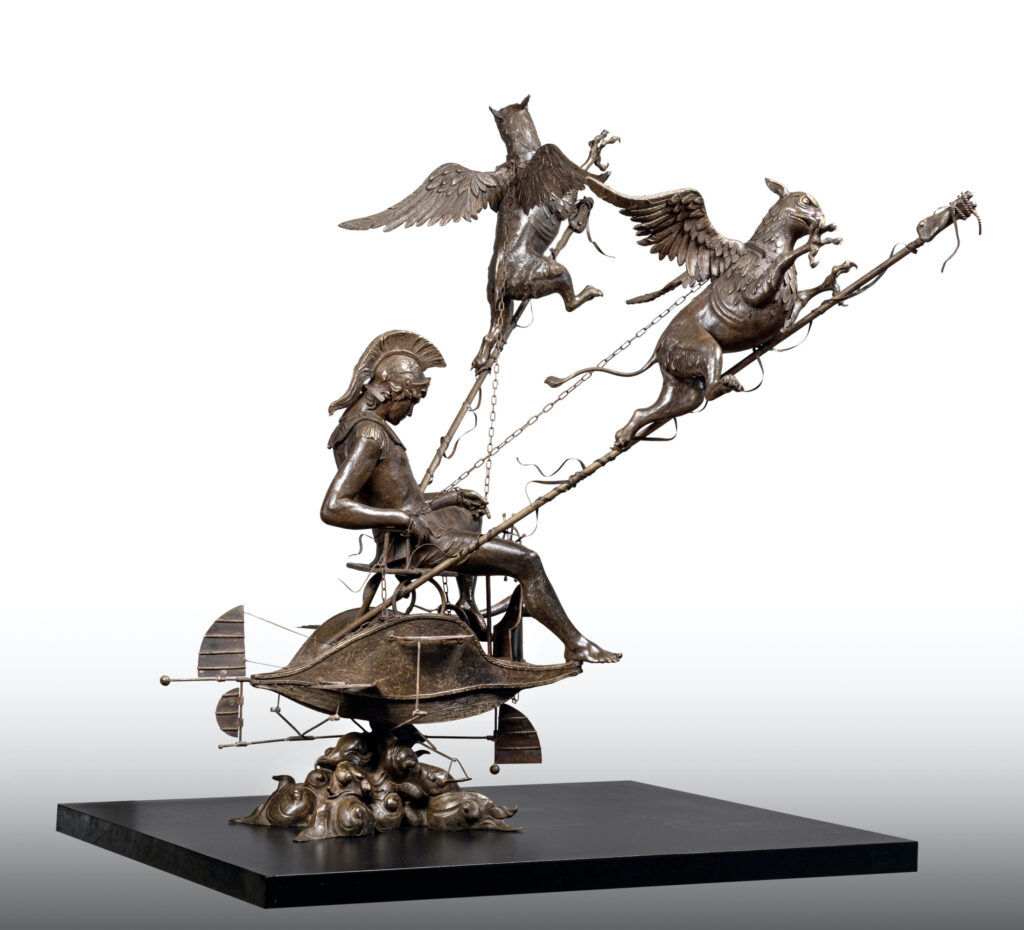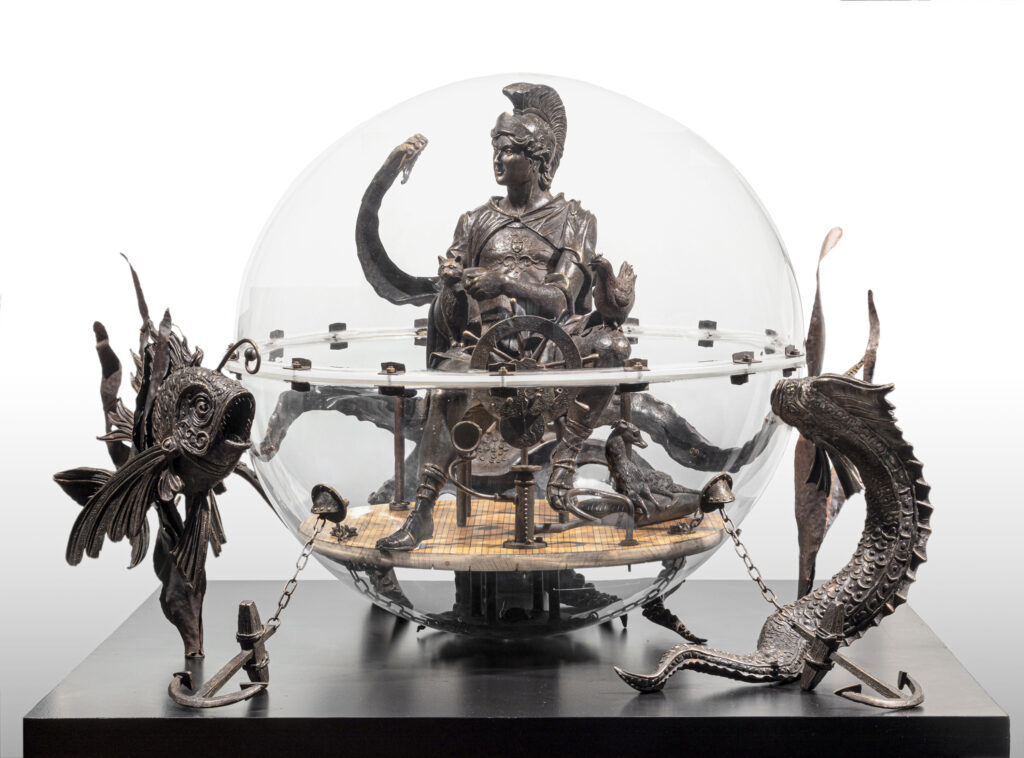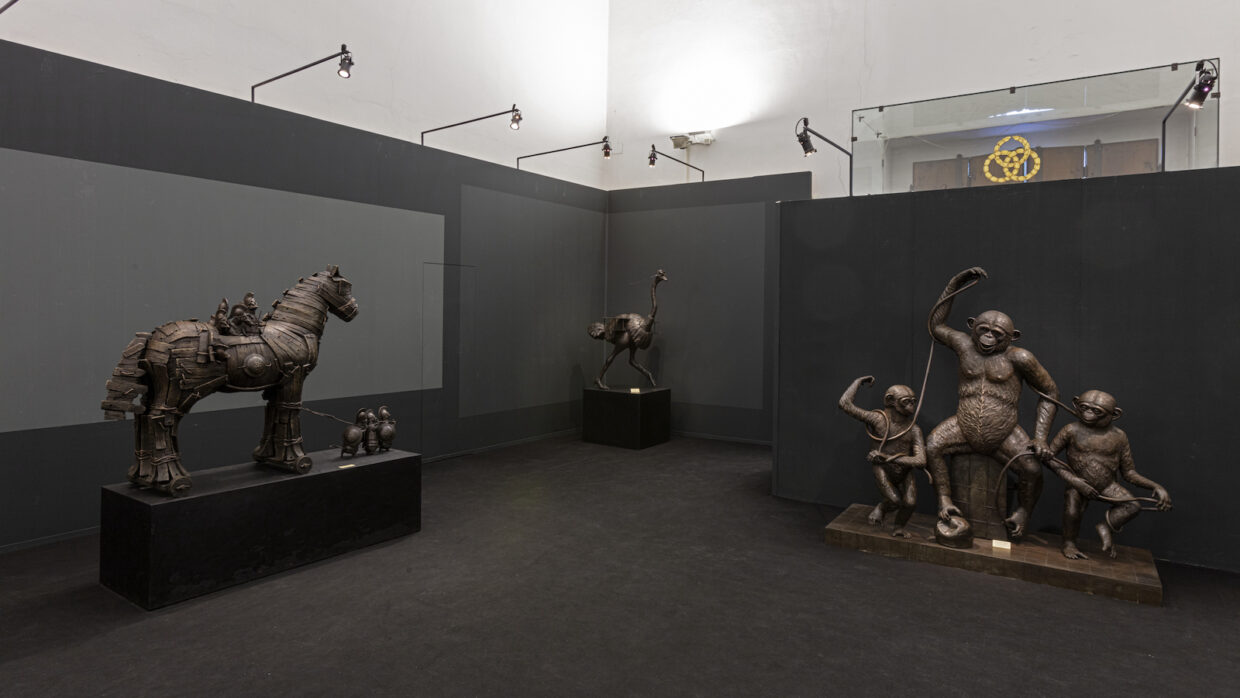The Accademia delle Arti del Disegno in Florence has transformed into a paradoxical bronze circus, or a “Carnival of the Animals,” thanks to the imaginative work of New York-based Danish artist Bjørn Okholm Skaarup. His exhibition, “Un Bestiario in Bronzo – A Bestiary in Bronze,” is on view through Aug. 31, offering visitors a unique journey into the world of anthropomorphized animals as allegories of human aspirations and follies.
Skaarup’s sculptures and drawings are rooted in the animalier tradition, which dates back to classical antiquity and even beyond to prehistory. All of Skaarup’s sculptures were cast in Florence, and the city’s unrivaled legacy in the arts and sciences is evident in his work. His bronze bestiary draws heavily on inspiration from late Renaissance masters from Florence and Tuscany.
Despite the weight of this cultural foundation, Skaarup’s images of animals are memorable and light, given wings to let them soar. His recent project focuses on a real but exceptional historical character: Alexander the Great, represented through one of the myths that flourished around him.
Recently, JCC caught up with Skaarup to discuss the inspiration behind his bestiary, the influence of the Florentine legacy on his work, his unique interpretation of the myth of Alexander the Great, and his creative process that balances historical research with artistic freedom.
Your exhibition, “Un Bestiario in Bronzo – A Bestiary in Bronze,” showcases a variety of animals as allegories of human aspirations and follies. Can you share the inspiration behind this concept and how you chose which animals to feature?
I’ve always loved the fables of Aesop, La Fontaine, and many other lesser-known writers of animal tales. Fables represent a very rich tradition with deep historical and even prehistorical roots across the globe. I enjoy both reinterpreting such fables and creating my own animal themes and motives. In the latter case, in “The Seven Continents,” I chose seven animals (panda, koala, raccoon, European badger, South American tapir, Emperor penguin, and zebra) whose habitats were restricted to their own continent.
Other of my bronze animals have symbolized classical themes, such as “The Four Elements” which were represented by an eagle (air), a mole (earth), a dragon (fire) and a fish (water).

Image courtesy Accademia delle Arti del Disegno
Your work draws heavily on the Florentine legacy in the arts and sciences. How has this historical context influenced your artistic approach, and how do you see your work contributing to this legacy?
I have always admired the works of the Florentine bronze masters of the late Renaissance; and am still dumbfounded every time I see Cellini’s “Perseus,” Giambologna’s equestrian statue of Duke Cosimo I, or Pietro Tacca’s fantastic fountains made of real and imaginary sea creatures – all of which are located on two central public squares in Florence.
The exhibition includes a focus on Alexander the Great, represented through myths about his ambition to conquer not just the earth, but also the air and the seas. What drew you to this historical figure, and how does his story fit into the broader themes of your exhibition?
Including Alexander the Great in this bronze bestiary made good sense since, according to tradition, his mythical flying machine was driven by two griffons, and his equally extraordinary diving bell allegedly contained three pet animals (a rooster, a cat and a dog) while being surrounded by sea monsters.
Just as well-known animal tales are often cautionary tales about human behavior, the Alexander Legends serve as warnings against hybris, and recount the many risks involved in challenging the limits of nature and human existence. Like the mythical Alexander, modern humans master both the skies and seas – and have thereby unknowingly caused the ongoing ecological global disasters we’re currently faced with.

Image courtesy Accademia delle Arti del Disegno
Your sculptures are known for their memorable images of animals, which are not weighed down by myriad inspirations but are given wings to soar. Can you elaborate on your creative process and how you balance historical research with artistic freedom?
What I love about the bronze medium is its ability to produce very ambitious forms. The strength and flexibility of the material makes it possible to make dynamic compositions that would never be realized in more bridle materials like clay and stone.
Your work is described as playing “between the limits of nature and culture,” with animals that are “thoroughly culturalized.” Can you elaborate on this concept and how it influences your creative process?
Every civilization has used animals in its myths and iconography; and still today every country has its own national bird or another favorite totem animal. The interplay of animals in cultural settings is a bottomless visual playground and an ongoing theme which I thoroughly enjoy exploring.



